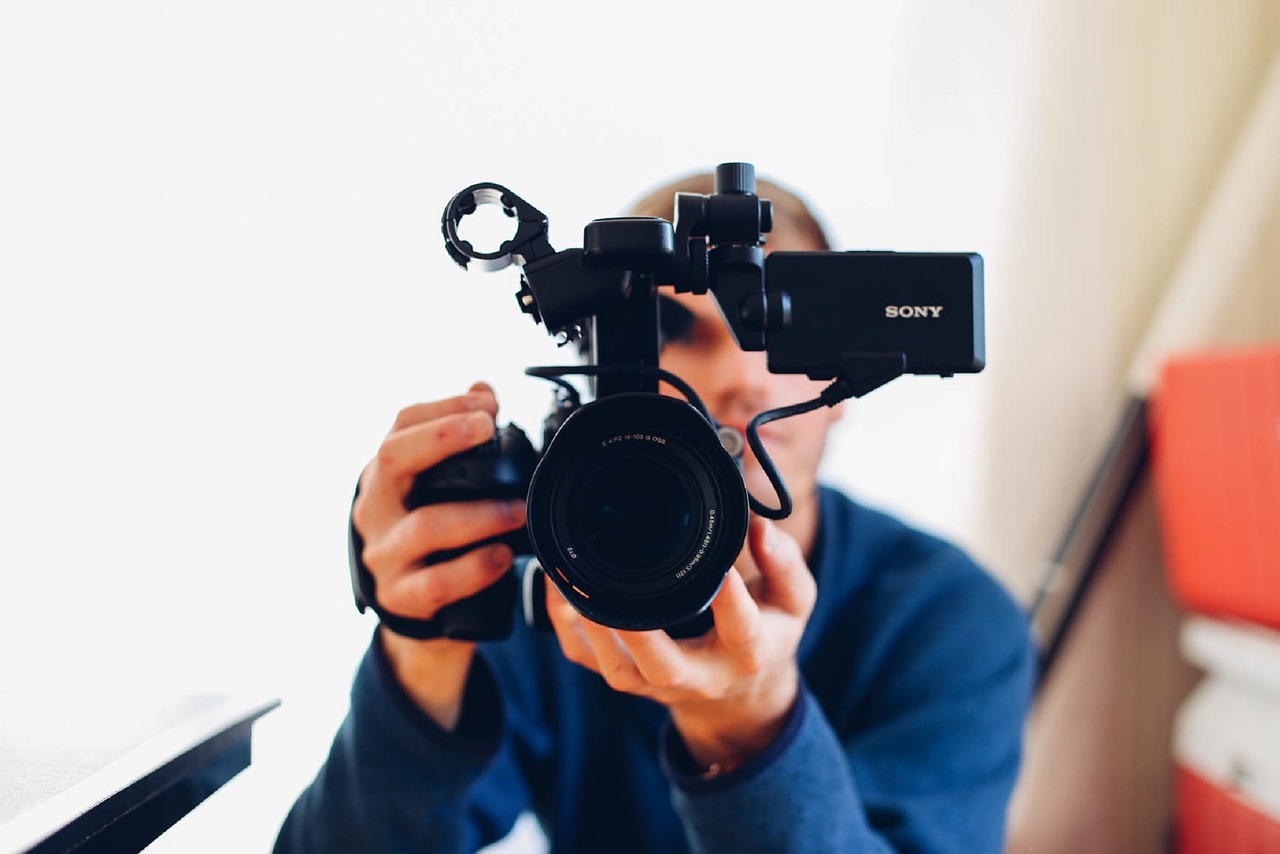
Capturing the Perfect Moment: The Evolution of Product Videography
The realm of product videography has undergone a significant transformation, moving from straightforward product displays to captivating, narrative-driven videos. This evolution marks a shift in how brands communicate, with an emphasis on not just showing a product but telling its story. Today, product videography is an art form that combines technical prowess with creative storytelling to capture the essence of a product in a way that resonates with audiences.
Technological Advancements in Product Videography
The landscape of product videography has been dramatically reshaped by recent technological advancements. These developments have not only enhanced the quality of corporate videos but also broadened the scope for creative storytelling. Key advancements affecting corporate video production include:
- 4K Resolution: The shift to 4K videography marks a significant leap in video clarity and detail. This ultra-high definition format offers four times the resolution of standard 1080p HD, making it ideal for capturing the intricate details of products. The enhanced resolution brings a level of realism and immersion that can make a product stand out, especially in a competitive market.
- Drone Footage: Drones have revolutionised aerial videography, providing a new perspective in product videos. They allow for sweeping, cinematic shots that showcase products in dynamic and engaging ways. Drone footage is particularly effective in demonstrating the scale of products or placing them within a broader environmental context, offering views that were previously difficult or costly to achieve.
- Live Stream Sales Platforms: The rise of live stream sales has added an interactive element to product videography. Brands can now showcase their products in real-time, engaging directly with their audience. This immediacy adds a layer of authenticity and can help build trust with potential customers. Live streaming also allows for instant feedback and Q&A sessions, making it a powerful tool for interactive marketing and sales.
- 360-Degree Video Technology: This technology has enabled videographers to capture a spherical view of their surroundings, offering viewers a fully immersive experience. In product videography, 360-degree videos allow customers to view a product from every angle, giving them a comprehensive understanding of what they are considering purchasing.
- Advanced Stabilisation Technology: The advent of gimbals and advanced stabilisation technologies has revolutionised handheld videography. This allows for smooth, cinematic-quality movement shots in advertisements, even in dynamic or unpredictable environments. It’s particularly useful in product videography for creating fluid, engaging videos that maintain professional quality.
- Augmented Reality (AR) Integration: AR in videography offers an interactive experience where digital elements are superimposed onto the real world in a video. This can be used in product videography to showcase how a product can be used or to demonstrate its features in a highly engaging and interactive manner.
- High Dynamic Range (HDR) Imaging: HDR in videography captures a broader range of colours and light levels, bringing out the finer details in both the brightest and darkest parts of the video. This is particularly important in product videography to ensure that the product’s colours and textures are accurately and vividly represented.
Storytelling in Product Videos

Storytelling in product videography is a crucial element that goes beyond mere visual representation. It involves crafting a narrative that not only showcases the product but also connects emotionally with the audience. To effectively weave a narrative into product videos, several key factors should be considered:
- Identifying the Core Message: The first step in storytelling is to identify the core message or the unique selling proposition of the product. What makes the product special? Is it the innovation it brings, its usability, or the lifestyle it represents? This message should be the cornerstone of the narrative.
- Understanding the Audience: Knowing the target audience is vital. What resonates with them? What are their aspirations, needs, or problems that the product can solve? Tailoring the story to meet the audience’s perspective can significantly increase engagement and relatability.
- Creating a Story Arc: A good narrative has a beginning, middle, and end. Start by introducing the product in a way that grabs attention, show the product in action or its features in the middle, and conclude with a strong call to action or summarisation of the product’s benefits.
- Using Emotional Triggers: Emotions drive decisions. Incorporating elements that trigger emotions – like joy, surprise, or even nostalgia – can make the product more appealing. This could be achieved through the storyline, music, visuals, or the overall tone of the video.
- Incorporating Human Elements: Including people in product videos can humanise the product. Showing the product being used by people in real-life scenarios makes it easier for viewers to envision themselves using it.
- Highlighting Product Features Creatively: Instead of just listing features, show them in action. Demonstrating how the product works or how it can be used in daily life can be more effective than just talking about it.
- Utilising Visual and Audio Aesthetics: The visual and audio elements of the video should complement the story. This includes the choice of colour scheme, lighting, camera angles, and music. Each of these elements should contribute to the overall mood and tone of the narrative.
- Pacing and Rhythm: The pace of the video should match the narrative flow. Too fast, and you risk losing detail; too slow, and you may lose viewer interest. The rhythm should align with the narrative arc, building up to key moments.
- Consistency with Brand Identity: The video should reflect the brand’s identity and values. Consistency in style, tone, and messaging across all media reinforces brand recognition.
- Call to Action: Conclude with a clear call to action. What do you want the viewer to do after watching the video? Whether it’s visiting a website, making a purchase, or sharing the video, a clear call to action is crucial.
GradePixel’s Approach to Product Videography
At GradePixel, our approach to product videography is meticulously tailored to bring each client’s vision to life, ensuring every video we produce is as unique as the product it showcases. Here’s how we navigate our product videography projects:
Step 1: Brief & Quotation
Our process begins with a detailed briefing session where we discuss your product videography requirements. Understanding your vision and objectives is crucial for us to craft a tailored proposal. We then provide a customised quotation that respects your budget constraints, ensuring affordability without compromising on quality. Upon agreement and an initial deposit, we move forward to the pre-production stage.
Step 2: Pre-Production
This stage is all about laying the groundwork for a successful shoot. Our team collaborates closely with you to select appropriate props, identify the best shooting locations, and develop mood boards and storyboards that align with your product’s story. We also script the video, ensuring that the narrative not only highlights the product’s features but also engages the audience emotionally and intellectually. Our extensive network gives us access to professional models and actors, ensuring we have the right talent for your product video.
Step 3: Production
Led by experienced videographers and overseen by professional producers, the production phase is where our plans come to life. We pay meticulous attention to every detail, from lighting and camera angles to the product’s placement and movement. Whether you prefer a hands-on approach or to let our team take the lead, we remain adaptable to your preferences throughout the shoot. Continuous feedback is welcomed and integrated, ensuring the final product aligns perfectly with your expectations.
Step 4: Post-Production
The final stage involves editing the captured footage to produce a polished and compelling product video. Our post-production process is collaborative, involving regular check-ins with you for feedback and revisions. This ensures that the final video not only meets but exceeds your expectations, ready to be used in your marketing strategy with confidence.
Case Study: Sirui C60R RGB Lights
In our collaboration with Sirui for their C60R RGB lights, we faced the challenge of presenting a technical product in an engaging and understandable manner. The project aimed to demonstrate the lights’ versatility and innovative features through a visually compelling narrative.
- Conceptualisation: We started by identifying the unique selling points of the C60R RGB lights. Our focus was on showcasing the range of colours, brightness options, and ease of use. The concept was to create scenarios where these features come to life – from a photographer working in a studio to a videographer on a dynamic set.
- Production Strategy: Led by Videographer Reginald and Producer Yuzu, our strategy involved using the C60R lights themselves as a key element in the production. We utilised various lighting setups to demonstrate the impact these lights can have in real-world scenarios. Close-up shots highlighted the build quality and design details, while wider shots showed the lights in action, enhancing the subject matter being filmed.
- Narrative Development: The storyline was developed to connect with both professional and amateur photographers and videographers. We aimed to demonstrate that, regardless of the user’s skill level, Sirui’s lights are an essential tool for creative expression. This was achieved by depicting diverse use-case scenarios, seamlessly transitioning from one setting to another, showcasing the product’s adaptability.
- Post-Production Focus: In post-production, we emphasised colour grading to reflect the diverse lighting capabilities of the C60R. Editing was focused on creating a smooth flow that guides the viewer through each feature of the product, accompanied by a narrative voiceover that provides informational context.
The final product was a video that not only highlighted the features of the Sirui C60R RGB lights but also illustrated their practical application in various settings. This approach not only informed potential customers about the product but also demonstrated its value in enhancing creative projects.
Embracing the Art of Visual Storytelling in Product Videography
In the ever-evolving world of digital marketing, GradePixel stands at the forefront of product videography in Singapore. Our expertise extends beyond traditional product photography services, embracing the dynamic realm of videography to tell your brand’s story in the most engaging way possible.
At our photo studio in Singapore, we ensure that every product video we craft is not just seen but felt and remembered. Whether it’s accompanying a fashion photoshoot or a detailed product showcase, our team is equipped to bring your vision to life.
Connect with us today and take the first step towards transforming your product presentation into a captivating visual experience.


